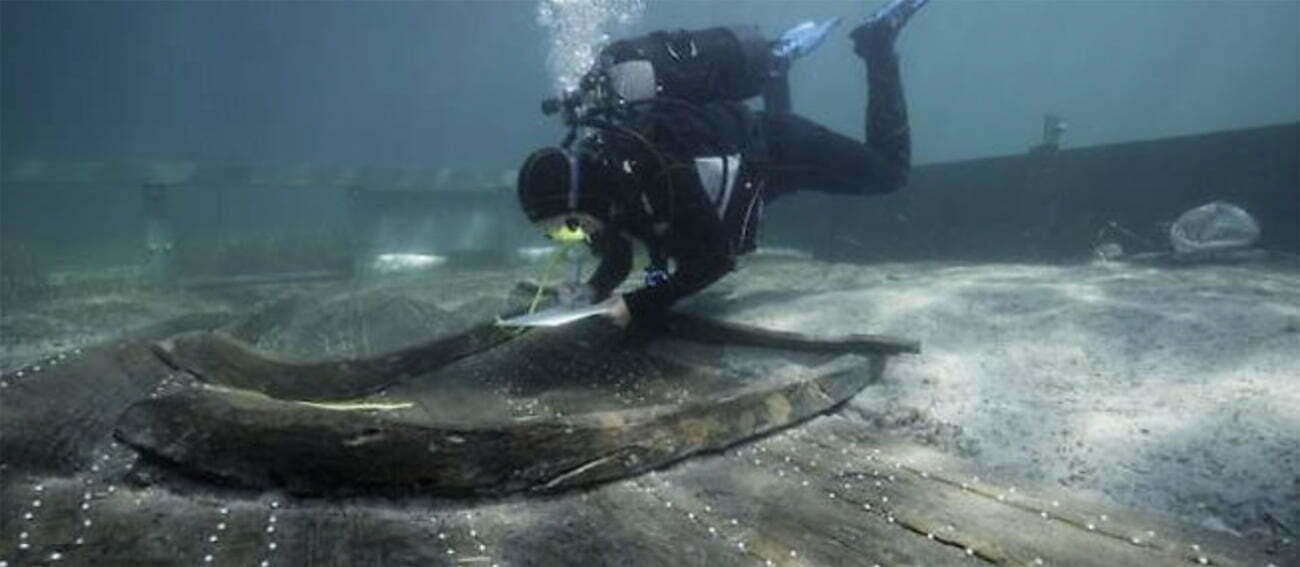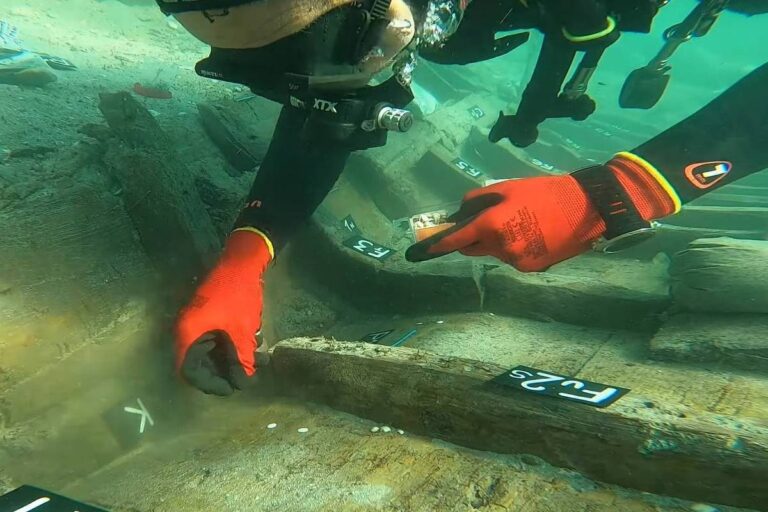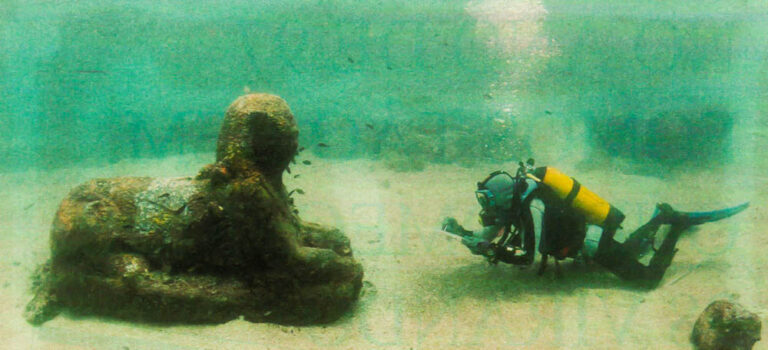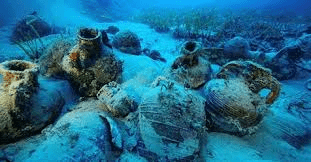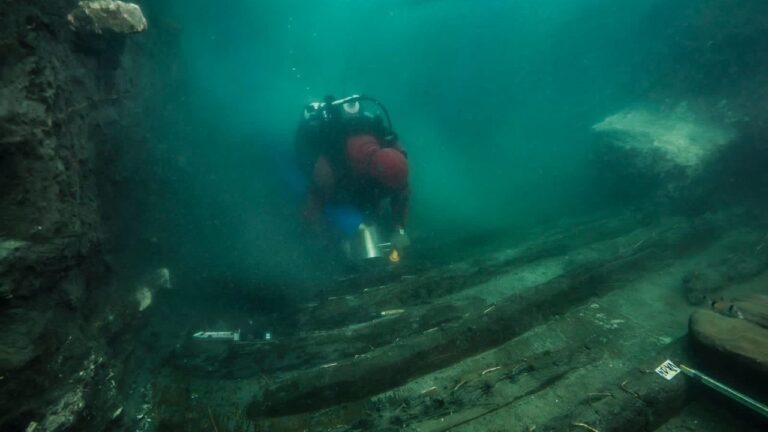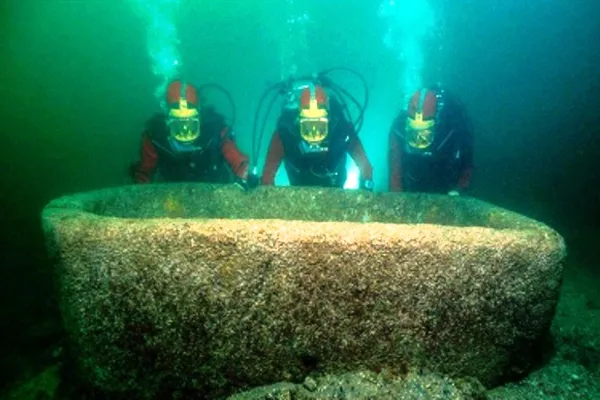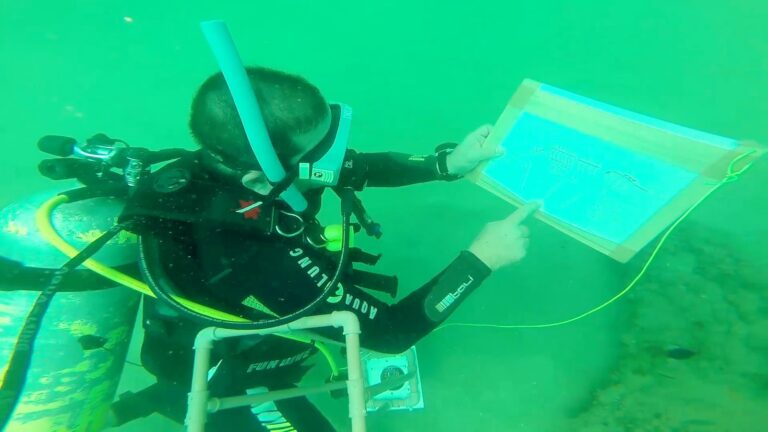The Crucial Role of Technology in Underwater Research
In recent years, there has been a growing interest in exploring and understanding underwater ecosystems. The importance of underwater research cannot be overstated, as it plays a crucial role in expanding our knowledge of the Earth’s oceans and the diverse lifeforms that inhabit them. Thanks to advancements in technology, researchers are now able to uncover new discoveries and gain deeper insights into this challenging frontier.
Underwater research holds immense importance as it contributes to our understanding of the world’s oceans, which cover more than 70% of the planet’s surface. These vast underwater ecosystems are home to a wide range of species, many of which are yet to be discovered or studied in depth. By studying these ecosystems, researchers can assess the health of marine life and contribute to conservation efforts.
The growing interest in underwater research is fueled by the advancements in technology that have revolutionized the field. Specialized equipment, such as remotely operated vehicles (ROVs) and autonomous underwater vehicles (AUVs), are now capable of withstanding extreme conditions and limited accessibility. These technological innovations have opened up new possibilities for researchers, enabling them to explore depths that were previously inaccessible.
Remotely Operated Vehicles (ROVs) have proven to be invaluable tools in underwater research. These submersible robots can be controlled from the surface and are equipped with cameras and sensors to collect data in real-time. ROVs allow researchers to reach depths that are otherwise dangerous for humans, such as exploring deep-sea trenches or studying underwater volcanoes. Their capabilities and advantages are impressive, ranging from collecting samples and conducting surveys to performing delicate manipulations on the ocean floor.
Similarly, Autonomous Underwater Vehicles (AUVs) are playing a vital role in underwater research. These self-guided vehicles can navigate through the water autonomously, without the need for direct human control. AUVs are equipped with various sensors and instruments that can collect data on water temperature, salinity, and other environmental parameters. The capabilities and advantages of AUVs include conducting long-duration missions, collecting high-resolution data, and performing complex underwater surveys.
Sonar technology and acoustic imaging have become indispensable tools in mapping and imaging underwater environments. By using sound waves, researchers can create detailed maps of the seafloor and detect underwater objects or biological structures. Sonar can be used to study the geological features of the ocean floor, locate shipwrecks, and even track the movements of marine animals. The importance of sonar technology in underwater research cannot be understated, as it provides an unparalleled means of understanding and visualizing the underwater world.
Another crucial technological advancement in underwater research is the utilization of underwater cameras and video systems. Visual documentation plays a significant role in research, allowing researchers to capture images and videos of marine life, habitats, and underwater phenomena. These visual data provide valuable insights into the behavior and ecology of aquatic organisms. Various types of underwater cameras and video systems are available, including remotely operated systems and autonomous underwater systems. These systems enable researchers to observe marine life in their natural habitats, without disrupting their behavior.
In conclusion, the importance of underwater research cannot be overstated, given the vastness and mystery that lies beneath the ocean’s surface. Advancements in technology have enabled researchers to explore and understand underwater ecosystems to a greater extent than ever before. Through the use of ROVs, AUVs, sonar technology, and underwater cameras, scientists are able to collect valuable data and make significant scientific discoveries. The impact of technology on underwater research includes facilitating scientific exploration, enhancing data collection and analysis, and promoting conservation efforts. As technology continues to advance, we can expect further developments and innovations that will revolutionize the field of underwater research and our understanding of the ocean’s depths.
Table of Contents
Underwater Research: A Challenging Frontier
Underwater research is a fascinating and vital field that plays a crucial role in understanding and conserving our oceans. However, it presents unique challenges that make it a truly challenging frontier for researchers. The extreme conditions of the underwater environment and limited accessibility pose significant obstacles that must be overcome in order to explore and study underwater ecosystems.
The underwater environment is vastly different from the familiar land-based environment. Researchers face extreme pressure, darkness, and unpredictable weather conditions, making it difficult to conduct experiments and collect data. Additionally, the lack of oxygen and limited visibility further complicate the research process. These challenges require innovative solutions and specialized equipment designed to withstand these harsh conditions.
Specialized equipment and technology are essential for underwater research. Researchers rely on advanced tools such as remotely operated vehicles (ROVs) and autonomous underwater vehicles (AUVs) to access and explore underwater environments. These vehicles are equipped with cameras, sensors, and manipulator arms that allow researchers to collect samples, take measurements, and record observations. Additionally, sonar technology and acoustic imaging are pivotal in mapping and imaging underwater environments.
One of the biggest challenges faced by underwater researchers is the limited accessibility to underwater ecosystems. The deep sea, for instance, remains largely unexplored due to its immense depth and inhospitable conditions. However, technological advancements have enabled researchers to venture deeper and uncover the mysteries that lie beneath the surface. With the help of underwater cameras and video systems, visual documentation has become an invaluable tool in underwater research. These systems enable researchers to capture high-definition footage and images, providing a window into this previously inaccessible world.
In conclusion, underwater research is a challenging frontier that requires specialized equipment and technological advancements to overcome the unique obstacles presented by the underwater environment. The extreme conditions, limited accessibility, and need for specialized equipment make underwater research a complex and demanding endeavor. However, the advancements in technology have paved the way for new discoveries and a better understanding of underwater ecosystems. Continued support and investment in underwater research initiatives are crucial in enabling further exploration and conservation efforts.
Technological Advancements in Underwater Research
Underwater research has always been a challenging endeavor due to the extreme conditions and limited accessibility of underwater ecosystems. However, advancements in technology have revolutionized this field, enabling scientists to explore and understand these mysterious environments like never before.
1. Remotely Operated Vehicles (ROVs)
Remotely Operated Vehicles, or ROVs, play a crucial role in underwater research. These unmanned vehicles are controlled from the surface and are equipped with cameras and sensors to capture valuable data. They can withstand high-pressure environments and reach depths that are too dangerous for human divers. The capabilities and advantages of ROVs are immense, allowing researchers to conduct detailed surveys, collect samples, and even conduct experiments in areas previously inaccessible.
For instance, the exploration of deep-sea hydrothermal vents would not have been possible without the use of ROVs. These vents, which spew mineral-rich water and support unique ecosystems, are located at depths of thousands of meters. ROVs have provided invaluable insights into the biodiversity and geology of these habitats, aiding in the understanding of underwater ecosystems.
2. Autonomous Underwater Vehicles (AUVs)
Autonomous Underwater Vehicles, or AUVs, are another technological advancement that has transformed underwater research. These self-propelled, untethered vehicles can navigate underwater autonomously, collecting data from their surroundings. Equipped with sensors and instruments, they can gather information about water conditions, marine life, and even bottom terrain.
One of the notable advantages of AUVs is their ability to cover large areas quickly and efficiently. They can create detailed maps of the seafloor, helping researchers understand underwater topography and identify important features such as coral reefs or underwater geological formations. AUVs have also been used to study migration patterns of marine species and monitor the health of underwater ecosystems.
3. Sonar and Acoustic Imaging
Sonar technology has played a crucial role in underwater research, particularly in mapping and imaging underwater environments. Sonar, short for sound navigation and ranging, uses sound waves to create images of underwater landscapes. It has been used extensively to study the ocean floor, identify underwater objects, and locate submerged archaeological sites.
Acoustic imaging, a subset of sonar technology, enables researchers to visualize underwater habitats and marine life. It provides detailed images of the seafloor, allowing scientists to study the distribution of species, monitor changes in marine ecosystems, and assess the impact of human activities on underwater environments.
4. Underwater Cameras and Video Systems
Visual documentation is of utmost importance in underwater research, and advancements in underwater cameras and video systems have revolutionized this aspect. Researchers can now capture high-resolution images and videos of marine life, underwater structures, and geological formations, allowing for detailed analysis and documentation.
Different types of underwater cameras and video systems cater to various research needs. Some are capable of capturing high-definition footage in low-light conditions, enabling researchers to explore the depths of underwater caves or other poorly lit areas. Others can be deployed for long periods, capturing time-lapse footage of marine life behaviors or environmental changes.
The utilization of visual data in research has provided a wealth of information about underwater ecosystems, contributing to the overall understanding and conservation of these delicate environments.
In conclusion, technological advancements have played a crucial role in pushing the boundaries of underwater research. ROVs, AUVs, sonar and acoustic imaging, as well as underwater cameras and video systems, have revolutionized the way scientists explore and understand underwater ecosystems. These advancements have facilitated scientific discoveries, enhanced data collection and analysis, and promoted conservation efforts. As we look towards the future, continued support and collaboration among researchers and institutions are crucial to further advancements in underwater research technology. This will not only expand our knowledge of these underwater frontiers but also contribute to the preservation and protection of these delicate ecosystems.
1. Remotely Operated Vehicles (ROVs)
ROVs play a crucial role in underwater research by enabling scientists to explore and study the depths of the ocean that are inaccessible to humans. These remotely operated vehicles are specifically designed to withstand the extreme conditions of the underwater environment, allowing researchers to conduct various experiments and collect valuable data.
ROVs serve as a vital tool for underwater research due to their capabilities and advantages. Equipped with high-definition cameras and sensors, they provide detailed and real-time visual documentation of underwater ecosystems. This allows scientists to observe marine life, study their behavior, and monitor changes in these environments over time.
Moreover, ROVs offer the advantage of being remotely controlled from the surface, eliminating the risk to human divers. They can reach great depths and withstand high pressure, making them ideal for exploring the ocean’s trenches and other challenging underwater locations. This enables researchers to gather data from regions previously deemed too hazardous to reach, thus expanding our understanding of underwater ecosystems.
Notable examples of ROVs being used in research include deep-sea exploration missions, such as the discovery of underwater volcanic eruptions and the exploration of deep-sea vents. These vehicles have also been employed in marine archaeology to explore shipwrecks and uncover historical artifacts. Through their usage, scientists have been able to reveal new species, document marine biodiversity, and deepen our understanding of the world beneath the sea.
Overall, ROVs have revolutionized underwater research by providing a means to explore the uncharted depths of the ocean. With their advanced technology and capabilities, they continue to contribute significantly to scientific discoveries and advancements in the field. Their usage promotes conservation and the preservation of underwater ecosystems by providing researchers with crucial data necessary for informed decision-making. As technology continues to evolve, the potential for even more innovative applications and advancements in underwater research using ROVs is exciting.
2. Autonomous Underwater Vehicles (AUVs)
Autonomous Underwater Vehicles (AUVs) play a crucial role in underwater research by enabling scientists to explore and study the depths of the ocean in a way that was once deemed impossible. These robotic devices operate independently, without the need for human intervention, and have revolutionized the field of underwater research.
AUVs are defined as underwater vehicles that are capable of navigating through the water column without being attached to a surface vessel. They can reach great depths and are equipped with a range of instruments and sensors to collect various data, such as temperature, salinity, and pressure. This allows researchers to gather valuable information about the underwater environment and its inhabitants.
One of the main advantages of AUVs is their ability to operate in challenging and hazardous conditions, where human divers may be limited or put at risk. AUVs can withstand extreme water pressures and withstand the harsh conditions of deep-sea exploration. They can also travel long distances and stay submerged for extended periods, allowing for more extensive research projects.
Notable examples of AUV usage in research include the exploration of underwater geological features, the mapping of underwater ecosystems, and the study of marine life behavior. AUVs have been used to survey the wreckage of sunken ships, conduct deep-sea archeological studies, and monitor the effects of climate change on coral reefs.
In conclusion, Autonomous Underwater Vehicles are a game-changer in the field of underwater research. Their ability to navigate and collect data independently has expanded our understanding of the underwater world, allowing for groundbreaking discoveries and advancements in marine science. As technology continues to evolve, we can expect even more sophisticated AUVs that will push the boundaries of exploration further. It is essential to support and invest in these research initiatives to protect and preserve our underwater ecosystems for future generations.
3. Sonar and Acoustic Imaging
Sonar technology plays a crucial role in underwater research. By utilizing sound waves to map and detect objects underwater, it allows researchers to explore and understand the complex underwater environments. Mapping and imaging underwater environments is vital for studying marine life, underwater topography, and identifying potential hazards.
The importance of sonar technology lies in its ability to provide detailed information about underwater structures and ecosystems that are otherwise difficult to access. It enables researchers to uncover hidden features, such as submerged caves and underwater currents, enhancing their understanding of these unique habitats.
Sonar and acoustic imaging have numerous applications in underwater research. One such application is mapping underwater environments. By using sonar systems, researchers can create detailed maps of the seafloor, helping them identify underwater mountains, valleys, and even ancient submerged civilizations.
Another important application is imaging underwater environments. Acoustic imaging allows researchers to visualize underwater habitats and the creatures living within them. It helps identify different species, observe behavior patterns, and assess the overall health of marine ecosystems.
The significance of sonar and acoustic imaging in research is exemplified by various examples. In a study conducted by marine biologists, sonar technology was used to map the migration patterns of whales. By understanding their migratory routes, researchers can implement protective measures to prevent any disturbances.
In another research project, acoustic imaging was utilized to study the impact of climate change on coral reefs. By capturing detailed images of the reefs, researchers were able to assess the damages caused by rising sea temperatures and develop strategies for their conservation.
Overall, sonar and acoustic imaging are invaluable tools in underwater research. They enable scientists to explore and document underwater environments with precision and accuracy. With ongoing advancements in technology, these tools will continue to play a crucial role in deepening our understanding of the underwater world, promoting conservation efforts, and driving further scientific breakthroughs.
4. Underwater Cameras and Video Systems
The visual documentation of underwater research plays a crucial role in understanding and exploring the intricate ecosystems beneath the waves. Underwater cameras and video systems have revolutionized the way researchers collect and analyze data in this challenging environment.
There are various types of underwater cameras and video systems that are specifically designed to withstand the harsh conditions underwater. These systems range from handheld cameras to large, remotely operated vehicles (ROVs) equipped with high-definition cameras. The utilization of these devices allows researchers to capture detailed images and videos of the underwater world, providing valuable insights into the behavior of marine species and the overall health of the ecosystem.
The visual data collected through underwater cameras and video systems is utilized in a multitude of ways in underwater research. Firstly, it allows scientists to document and analyze the biodiversity of underwater ecosystems, identifying various species and their distribution patterns. This information is crucial for understanding the dynamics of these habitats and their vulnerability to environmental changes. Additionally, the real-time footage obtained through the use of underwater cameras and video systems allows researchers to observe and study the behavior and interactions of marine organisms, shedding light on their feeding habits, mating rituals, and community dynamics.
Furthermore, underwater cameras and video systems also have benefits in the field of conservation. The visual documentation captured through these devices can be used to raise awareness and advocate for the protection of vulnerable marine species and their habitats. The vivid and captivating images serve as powerful tools for educating the general public about the immense beauty and importance of underwater ecosystems, inspiring individuals to take action and support conservation efforts.
In conclusion, the significance of visual documentation in underwater research cannot be overstated. Underwater cameras and video systems enable researchers to capture valuable visual data, providing insights and understanding of the intricate underwater ecosystems. Through these devices, scientists can document biodiversity, study the behavior of marine organisms, and promote conservation efforts. The continuous development and improvement of underwater camera and video technologies will not only enhance our knowledge of the underwater world but also contribute to the preservation of these fragile ecosystems for future generations.
Impact of Technology on Underwater Research
Technology has played a crucial role in advancing the field of underwater research, enabling scientists to make significant scientific discoveries and explore the depths of our oceans like never before. With the advent of remotely operated vehicles (ROVs) and autonomous underwater vehicles (AUVs), researchers can now access areas that were previously considered unreachable due to extreme conditions and limited accessibility.
These technological advancements have facilitated scientific discoveries by allowing researchers to study aquatic ecosystems in their natural habitat and observe marine life up-close. ROVs and AUVs have the capability to capture high-definition images and videos of underwater environments, which provide invaluable data for scientists to analyze and understand the intricacies of underwater ecosystems. This leads to a deeper comprehension of the delicate balance of marine life and the impact of human activities on it.
Moreover, technology has significantly enhanced data collection and analysis in underwater research. Sonar and acoustic imaging systems, for instance, have revolutionized the way researchers map and visualize underwater environments, enabling them to create detailed and accurate 3D maps of the seafloor. By utilizing sonar technology, scientists can detect and identify underwater structures and resources, as well as locate marine species and their habitats.
Additionally, underwater cameras and video systems have proven to be instrumental in documenting underwater research. These visual data not only provide an opportunity for scientists to record and analyze marine behavior and interactions, but they also help raise public awareness about the importance of conservation and preservation efforts. Captivating visuals of the beauty and fragility of underwater ecosystems can inspire people to take action and support initiatives aimed at protecting our oceans.
In conclusion, the impact of technology on underwater research cannot be overstated. It has revolutionized the way scientists explore, study, and understand underwater ecosystems. By facilitating scientific discoveries, enhancing data collection and analysis, and promoting conservation and preservation efforts, technology has opened up a world of possibilities for researchers and has become an essential tool in the pursuit of knowledge and the conservation of our oceans. As technology continues to evolve, it is vital to provide continued support for underwater research initiatives and encourage future advancements in this field.
Future Trends and Possibilities
As technology continues to advance at a rapid pace, the future of underwater research holds exciting possibilities. There are several potential developments and innovations on the horizon that could revolutionize the field.
One area of great promise is the integration of artificial intelligence and machine learning. These technologies have the potential to greatly enhance data analysis and interpretation, allowing researchers to extract meaningful insights from vast amounts of underwater data. By utilizing AI and machine learning algorithms, researchers can identify patterns, detect anomalies, and make predictions, further advancing our understanding of underwater ecosystems.
In addition, collaboration among researchers and institutions is crucial for the future of underwater research. By fostering partnerships and sharing data and resources, researchers can tackle complex challenges more effectively and leverage each other’s expertise. Collaborative efforts can also lead to the development of new technologies and methodologies that can push the boundaries of underwater exploration and scientific discovery.
Another trend that holds great potential is the further development of underwater robotics and autonomous systems. These technologies have already played a significant role in underwater research, with remotely operated vehicles (ROVs) and autonomous underwater vehicles (AUVs) enabling scientists to collect data from previously inaccessible areas. Ongoing advancements in robotics and sensor technology will only expand the capabilities of these systems, allowing for more precise and efficient data collection.
Furthermore, the use of underwater drones and exploration instruments is also an area to watch in the future of underwater research. These devices can be equipped with sensors, cameras, and sampling tools to explore and document underwater environments in a non-intrusive manner. As these technologies continue to evolve, they will provide researchers with new ways to study marine life, map underwater landscapes, and assess the impact of climate change.
In conclusion, the future of underwater research looks promising, thanks to advancements in technology and a growing emphasis on collaboration. The integration of artificial intelligence and machine learning, as well as the continued development of underwater robotics and exploration instruments, will greatly enhance our ability to explore and understand underwater ecosystems. By working together and embracing technological innovations, researchers and institutions can continue to push the boundaries of underwater research and make valuable contributions to the conservation and preservation of our oceans.
Conclusion
In conclusion, technology plays a crucial role in underwater research. From the importance of underwater research to the advancements in technology enabling new discoveries, it is clear that the field is continuously evolving. The unique challenges faced by underwater researchers, such as extreme conditions and limited accessibility, highlight the need for specialized equipment and technology.
Technological advancements in underwater research have revolutionized the way scientists explore and understand underwater ecosystems. Remotely Operated Vehicles (ROVs) and Autonomous Underwater Vehicles (AUVs) have become essential tools in gathering data and conducting research in deep-sea environments. These vehicles have advanced capabilities, allowing researchers to reach depths and areas that were previously inaccessible.
Sonar technology and acoustic imaging have also played a crucial role in underwater research. They have allowed researchers to map and image underwater environments, providing valuable insights into the biodiversity and geology of these areas. Along with sonar, underwater cameras and video systems have provided visual documentation, which is significant in understanding the marine life and habitat.
The impact of technology on underwater research is immense. It has facilitated scientific discoveries, enhanced data collection and analysis, and promoted conservation and preservation efforts. With the advancement of technology, researchers can now gather more accurate data, leading to a better understanding of underwater ecosystems and the potential threats they face.
Looking towards the future, there are potential developments and innovations in underwater research technology. The integration of artificial intelligence and machine learning could revolutionize data analysis and interpretation. By collaborating with researchers and institutions, the possibilities for underwater exploration and research can be expanded.
In conclusion, the crucial role of technology in underwater research cannot be underestimated. It is essential to continue supporting underwater research initiatives, as they contribute to the knowledge and conservation of our underwater ecosystems. With continued advancements and exploration, we can unlock the mysteries of the deep and ensure the preservation of these invaluable environments for future generations.

